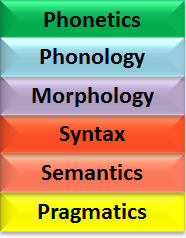29 Apr The Multiple Meanings of Polysemy
 Polysemy and Constraints
Polysemy and Constraints
Perhaps the most difficult task in Natural Language (NL) understanding is the resolution of polysemy or multiple meanings. Many words in every language do not exhibit polysemy and require no disambiguation. Most words, however, can be interpreted in at least a few different ways. This makes disambiguating NL text a non-trivial task. Each different meaning and shade of meaning for a word is called its “word sense.” To make matters worse, polysemy occurs at the phrase level as well as at the word level, and even identical phrases in different contexts may have different interpretations.
Polysemy is difficult for search engines using only keywords and phrases, so they often list huge numbers of documents that are not applicable to the request. Keywords and phrases fail to differentiate “the variety of individual meanings of the keywords, the complex meanings arising from the combinations of keywords into phrases, or even different meanings that occur when keywords and phrases are used in different contexts” (Jakus 2013).
Humans, however, grapple with this polysemy quite efficiently. As our minds process one word after another, we develop expectations based on our experiences. We also have the ability to combine words and synthesize and interpret meaning. As speech unfolds, the successive elements add constraints. Our understanding of syntax and semantics makes it possible for us to comprehend based on the relation of each new word to the file of constraints in our minds. In other words, the meaning of each word is constrained by that of those surrounding it. Humans use all these constraints and relationships as the basis for understanding.
| Understanding Context Cross-Reference |
|---|
| Click on these Links to other posts and glossary/bibliography references |
|
|
|
| Prior Post | Next Post |
| Mosaic of Concepts | Exceptional Logic |
| Definitions | References |
| Natural Language polysemy | Rumelhart & McClelland 1986 |
| word phrase context | Jakus 2013 Lamb 1966 |
| communication ambiguity | Winograd 1983 |
At its deepest levels, resolving ambiguity may be the most difficult part of communication, which is the most complex cognitive activity we perform. The intent of 3-DG, introduced in my “Mosaic of Concepts” post, is to find a better way to resolve ambiguity at all levels.
The following examples show phrases with one or more meanings.
- I saw the Mississippi flying into Minneapolis. (one reasonable interpretation)
- I saw a condor flying over Ventura. (two reasonable interpretations)
- I saw my hang-gliding instructor flying into Denver. (multiple interpretations)
Obviously, the ambiguities relate to the -ing verb’s modifier.
Types of Linguistic Knowledge
In Section 4 we learned about different types of associated knowledge. Two of the main categories discussed were existential (hierarchical) and causal (heuristic) knowledge. The distinctions between types of knowledge are important because we learn and use the different types of knowledge differently.
 Users of human language possess linguistic knowledge of several types, including the categories shown at right. Other categories of language knowledge could be described as separate strata or simplly included in one of these. To use any of this knowledge, and probably even to possess it, we need real-world knowledge to act as a conceptual foundation for communication. With this conceptual foundation, communication becomes possible and arguably necessary. Languages further provide mechanisms to make communication efficient. In addition to graphic symbols for written communication, languages have complex rule systems that govern combinations of structures on different levels to resolve ambiguity.
Users of human language possess linguistic knowledge of several types, including the categories shown at right. Other categories of language knowledge could be described as separate strata or simplly included in one of these. To use any of this knowledge, and probably even to possess it, we need real-world knowledge to act as a conceptual foundation for communication. With this conceptual foundation, communication becomes possible and arguably necessary. Languages further provide mechanisms to make communication efficient. In addition to graphic symbols for written communication, languages have complex rule systems that govern combinations of structures on different levels to resolve ambiguity.
Earlier, we looked at linguistic phenomena, all of which require linguistic knowledge of different types. The 3-DG approach is to describe linguistic knowledge in terms of relations. The way in which these relations fit together governs meaning and mediates the phenomena.
Some Categories of Linguistic Knowledge
- Denotations or meanings of words and other lexical items
- Connotations of lexical items and combinations
- Hierarchical and causal relations between lexical items
- Parallel relations of meaning (synonymy & antonymy) and sound (homonymy)
- Structural relations between categories and functional items
- Contextual relations between sentences and propositional content
- Figurative, artistic and humorous language Constraints
Constraints
Real-world influences and linguistic factors that shape language and determine meaning can be called constraints. From live discourse, humans discern additional constraints from implicit contextual information that may not be expressed in words. That information ranges from the noise of traffic on the street to the tactile sensation of snowfall and includes other sensory stimuli as well. Understanding text may require more cognitive energy than understanding discourse because of the absence of such sensory cues. Since computers do better with text, however, this discussion focuses on the understanding of written words.
 Automata for disambiguating polysemous text can use the same sort of formula that humans use. The semantic, syntactic and morphological constraints provided by juxtaposed words, clauses, and phrases provide enough information to begin to disambiguate. 3-DG adds pragmatic constraints, including contextual and domain information, to complete the understanding process. Once every word is understood, contextual levels of ambiguity can also be resolved by phrase, sentence and text-level syntactic, semantic and pragmatic constraints.
Automata for disambiguating polysemous text can use the same sort of formula that humans use. The semantic, syntactic and morphological constraints provided by juxtaposed words, clauses, and phrases provide enough information to begin to disambiguate. 3-DG adds pragmatic constraints, including contextual and domain information, to complete the understanding process. Once every word is understood, contextual levels of ambiguity can also be resolved by phrase, sentence and text-level syntactic, semantic and pragmatic constraints.
Constraint-based models have been used in many types of disambiguation, including the PDP group’s work with ambiguous character sequence displays (Rumelhart & McClelland, 1986).
As ambiguity is mediated at different levels, a stratificational approach (Sydney Lamb) can provide mechanisms to deal with the different types of ambiguity.
3-D Grammar uses multiple levels of constraints to resolve ambiguity. The prudent union of polysemy and constraints, with the insertion of context, is intended to bring about understanding.
| Click below to look in each Understanding Context section |
|---|









